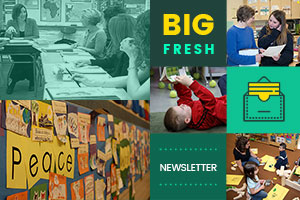May we always see life through love-colored glasses. Kamand Kojouri
For a moment, I didn’t believe that my expensive glasses could really have fallen into the lake. Sophie had just brushed the top of my head as she’d gotten off the boat. Could she really have knocked them off my head? I didn’t hear a splash, and even though it was getting dark, wouldn’t someone have caught a quick glimpse of them sinking to the bottom? No glasses were in sight.
“It’s shallow,” someone said. “We might be able to see them.”
Darkness was falling, and even with our phone flashlights, we couldn’t see much of anything.
As everyone else stepped off the boat, I contemplated taking off my shoes and feeling around the lake bottom with my feet. I knew exactly where they’d gone in. Maybe I could find them . . . but probably not. I followed the group into the ice cream shop and placed my order. We all laughed about the sinking glasses, including me. Except Sophie was nowhere to be found.
“Sophie’s really upset,” Jen whispered to me, pulling me aside. “I’ll buy you new glasses. Let it go.”
She didn’t have to say anything else. I hugged Sophie, reassured her that I wanted new glasses anyway. It wasn’t her fault, and I could see well enough without them.
“Don’t worry about it,” I said. “We have a great story.”
Sophie’s eyes still glistened, but she smiled. I was with my best friends, we had ice cream, and the sky shimmered with stars. Stars are still beautiful, even when they’re blurry.
The next morning, Sophie’s dad and his friend went back to the dock and returned home a little while later with my glasses.
“They were right there,” Bill said. “But if you had stood in the water, you would have sliced up your feet on the mussels, and you would have pushed the glasses into the silt.”
Patience and timing matters. Sometimes if we’re willing to wait, if we’re willing to allow students time to process, approximate, or just not be ready, they’ll get there—maybe on a different day or in a different way. When we push students and challenge them with tasks they’re not ready for, sometimes we do more damage than good. As much as I wanted my glasses for the boat ride home, it was better for both my feet and their retrieval that I waited until morning.
This week we look at how to reinforce learning from lessons in conferences and small groups. Plus more as always—enjoy!
Melanie Meehan
Contributor, Choice Literacy

Christy Rush-Levine uses a quick assessment during writing workshop conferences to connect expert students with peers who might need assistance. She includes a video example of the practice.
Bitsy Parks finds goals aren’t enough for her first-grade students—real growth requires that the goals eventually become habits. She develops a process to help children refine their goals step by step.
Cathy Mere explains the power of practice pages (say that three times fast!) as a tool to scaffold young readers and writers as they learn new words.
Our online course from Ruth Ayres, Better Student Feedback, will help teachers and coaches think through how to talk with students about progress and goals, as well as what to do with their responses. The course fee of $39 includes two months of access to the entire Choice Literacy library of 4000 articles and videos. If you have a current paid subscription to Choice Literacy, there is no charge for the course. Click here for details.

New members-only content is added each week to the Choice Literacy website. If you’re not yet a member, click here to explore membership options.
Balancing small groups and conferences is essential for transferring learning from lessons and units, and it’s one of the trickiest tasks for teachers. Dana Murphy explains how she works toward balance in her classroom, weighing everything from the timeline of the unit to the intensity of the minilesson.
Stella Villalba teaches young writers about writer’s craft. So how come evidence of learning from the minilessons isn’t showing up when she confers with her students? She decides to develop a plan to help students link craft lessons with their writing.
In this week’s video, Bitsy Parks confers with Michael about his gingerbread man writing. She encourages him to use a repeated phrase in the writing, echoing a whole-class lesson on repeated phrases.
In an encore video, Clare Landrigan meets with a fifth-grade student to reinforce learning from a whole-class lesson on inferring and character traits.

Coaches often hear the same question from teachers: How can we get ideas from the minilesson to stick in workshops? Tara Barnett and Kate Mills share some of their best strategies for making minilessons “sticky.”
In this quick video, Jean Russell explains how she leverages one-on-one coaching for learning with entire grade-level teams.
Beth Moore considers what may be the most important element of any writing conference—how to name the teaching point in clear and concise language so that transfer occurs.
Quote It:
Be bold. If you’re going to make an error, make a doozy, and don’t be afraid to hit the ball.
Billie Jean King
That’s all for this week!



